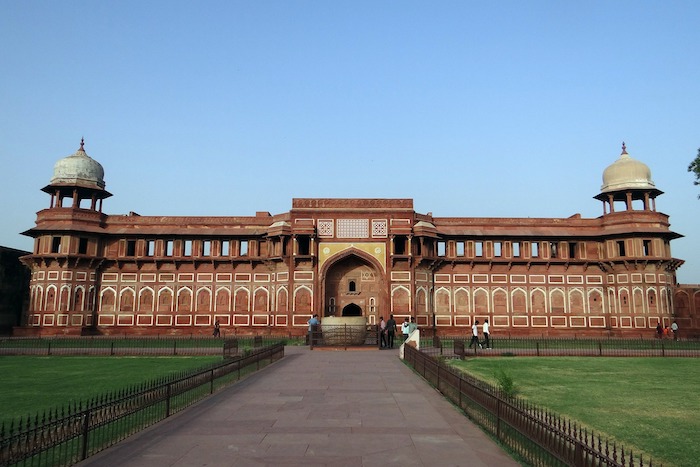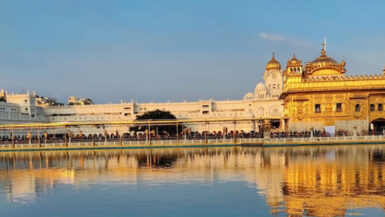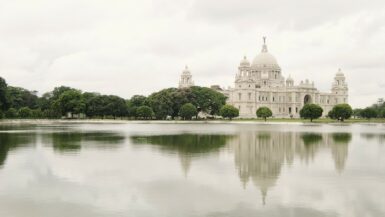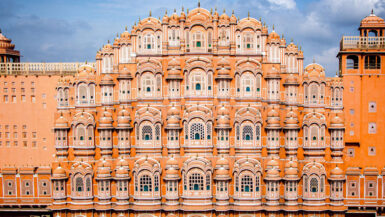Agra is a city in the northern state of Uttar Pradesh, India. Once part of the Mughal Empire, today the city is famous for its rich history and magnificent monuments like the Agra Fort, Fatehpur Sikri, Mehtab Bagh, and, of course, the Taj Mahal. It is also famous for its shoes, carpets and cuisine. From its wonders of the world to UNESCO Heritage sites, Mughal history to educational institutions, here are some of the most interesting facts about Agra.
7 Interesting Facts about Agra
1. Agra is in northern India
The city of Agra is located in the north of India, on the banks of the river Yamuna. As of 2022, it has a population of 2,313,971, and the city covers an area of 25 sq mi (40 sq km). It is the fourth-most populous city in Uttar Pradesh and the twenty-third most populous city in India. For comparison, Delhi is the biggest city in India with a population of 29,399,141.

2. Agra was the capital of the Mughal Kingdom
From 1556 to 1648, Agra was the capital city of the Mughal Kingdom during the period of Akbar and Shah Jahan. At this time, Agra was the foremost city on the subcontinent. After the end of Shah Jahan’s regime in 1648, Aurangzeb, the sixth Mughal emperor moved the capital to Delhi.

3. Agra is home to the Taj Mahal
The perfectly symmetrical Taj Mahal in Agra is an ivory-white marble mausoleum – a building that houses a tomb or group of tombs. It is one of the most famous monuments in India and one of the most visited tourist attractions in the world. It is also one of the New Seven Wonders of the World. Full of history and heart, many consider it one of the most beautiful buildings ever built. In 1632, Mumtaz Mahal, the wife of the Moghul Empire Shah Jahan, died. Upon her death, Shah Jahan commissioned the monument in her memory. It is a resting place for her tomb. The stunning complex usually draws between 7 to 8 million visitors each year.

4. The Red Fort of Agra is a UNESCO site
Another very important landmark is the Red Fort of Agra which stands near to the gardens of the Taj Mahal. This 16th-century Mughal monument is now a protected UNESCO World Heritage property. Within the walls of this fortress is the imperial city of the Mughal rulers with its many palaces, for instance, the Jahangir Palace and the Khas Mahal, as well as beautiful mosques and audience halls, such as the Diwan-i-Khas.

5. Agra is India’s main footwear production centre
The city of Agra is the largest shoe manufacturer in India. It contributes roughly 65 per cent of total domestic demand and a 28 per cent share of India’s overall footwear export. The city is the world’s second-biggest footwear exporter after China. This is why so many tourists buy leather shoes whenever they are shopping in the city.

6. Agra is home to the first planned city of the Mughals
Another UNESCO World Heritage Site in Agra is the Fatehpur Sikri (the City of Victory). Emperor Akbar constructed this city during the second half of the 16th-century and it was the first planned city of the Mughals, it was also the capital of the Mughal Empire for around 10 years. The City of Victory is rich with monuments and temples, all in a uniform architectural style. Fatehpur Sikri also includes one of the largest mosques in India, the Jama Masjid.

7. One of the oldest colleges in India is in Agra
Established in 1850 during the British Era, St. John’s College is a Christian college under the Church of North India and is widely one of the oldest educational institutions in India. The 172-year-old college is named after John the Apostle, one of the Twelve Apostles of Jesus.












